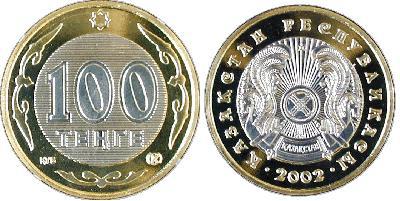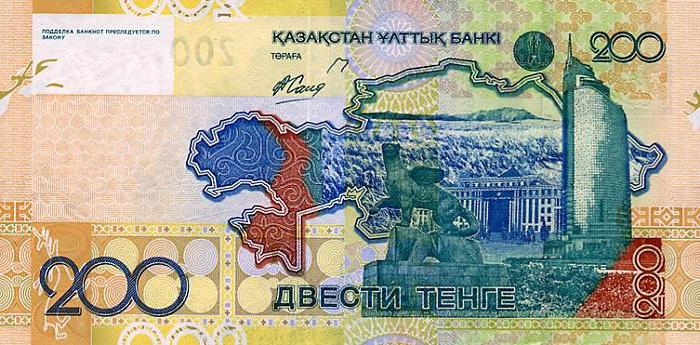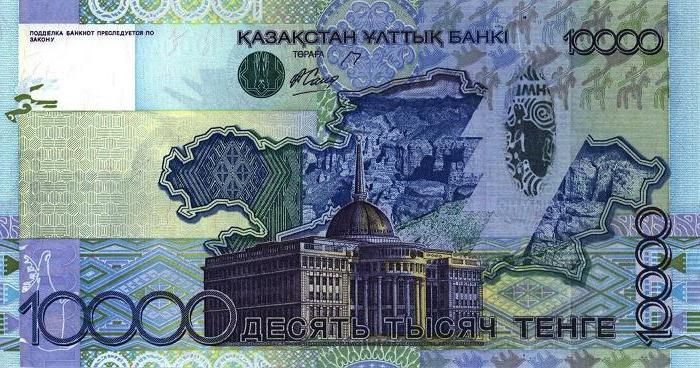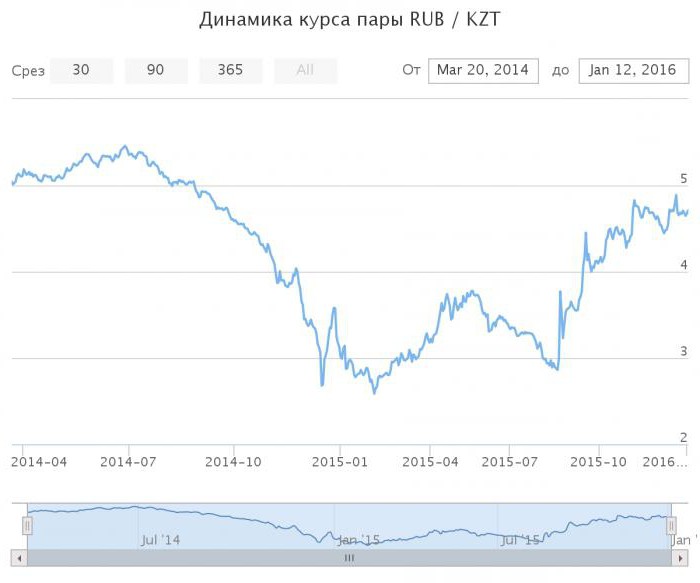The currency of Kazakhstan ranks first in terms of devaluation among European ones; this does not bode well for the economy of the Republic. It is strange that one of the most banknote-protected banknotes in the world is losing value so quickly.
What is the currency in Kazakhstan
Today, the Republic uses its own national currency, the Kazakhstan tenge. The name of the currency comes from the name of the medieval Turkic silver coins “dengue” or “tanga”. Later, these words were reflected in Russian culture, in particular, the “ruble” is a derivative of them.
Description of the national currency of Kazakhstan
For the first time, the currency of Kazakhstan was accepted into circulation to replace Russian rubles in 1993. The republic did this later than all other countries, separated from the USSR. In 2006, re-issue of banknotes was made, both issues have parallel circulation.
The Kazakh tenge contains a monetary unit of a smaller denomination - tyyn in the ratio of 1 to 100. However, it should be noted that, due to the low cost of the currency, the fractional denomination is practically not used in pricing, and the calculations are made in whole tenge.
For residents of the Republic, their own official currency is not only a convenient means of payment, but also a matter of national pride, which is why the national currency of Kazakhstan has a thoughtful design depicting ethno-cultural plots.
It should be noted that the development of the prototype banknotes took 2 years, close attention was paid to protecting the currency: tenge has 14 different attributes by which authenticity is identified - one of the highest rates in the world.

History of Kazakhstani currency
The banknotes of Kazakhstan have a relatively short history, which begins in 1991: the government of the Republic approved a plan for the development and subsequent introduction of the national currency.
Many residents were interested in the question of what currency will exist in Kazakhstan. After the collapse of the USSR, all newly formed states experienced difficulties in making payments. Until 1993, Soviet and Russian rubles and Kazakhstani tenge were simultaneously in circulation.
A group of designers to create the image of the future currency was approved from among the citizens of Kazakhstan, however, the first funds were printed abroad - in England. Only in 1995, the currency of Kazakhstan began to be printed at the national plant.
In 2006, a second issue was carried out, after another one, in 2013, due to the accelerated pace of devaluation of the national currency. To date, the Republic is exchanging old-style banknotes for new ones. Banknotes of the 2006 issue in circulation must be replaced by new ones by October 4, 2016.

Rating and appearance of the currency of Kazakhstan
To date, there are several different series of banknotes of different denominations in circulation. It is most correct to consider the last issue of 2013, it is very diverse: 6 bills and 7 coins.
Banknotes are presented in the following denominations:
- 200 with the image of the building of the Ministry of Defense;
- 500 with the image of the building of the Ministry of Finance;
- 1000 with the image of the building of the Presidential Center of Culture;
- 2000 with the image of the building of the Abai Opera and Ballet Theater;
- 5000 with the image of the Independence Monument and the building of the Kazakhstan Hotel;
- 10000 with the image of the building of the residence of the President "Ak Orda".

All coins of the Republic of Kazakhstan are made using nibrass, an alloy of steel and galvanized brass, nickel silver, an alloy of steel and galvanized nickel in the following denominations:
- 1;
- 2;
- 5;
- 10;
- 20;
- 50;
- 100.
Currency policy of Kazakhstan
The conduct of the monetary and financial policy of Kazakhstan is provided by the Central Bank of the Republic. The central bank reports to the president. The currency policy of Kazakhstan has several goals:
- containment of inflation;
- maintaining economic growth;
- support for exporting manufacturers;
- increasing the investment attractiveness of national assets.
In fact, over 15 years, the currency of Kazakhstan has been constantly devaluing, and the inflation rate remains above the upper limit of the Central Bank’s targeting corridor. During 2015, the tenge depreciated by 85.2% due to the announcement by the Central Bank of a floating exchange rate of the national currency.
The currency of Kazakhstan is under significant pressure for 3 main reasons:
- depreciation of the ruble, which is a leading indicator for the currency of Kazakhstan;
- lower oil prices;
- devaluation of the renminbi.
Kazakhstan tenge to ruble and other currencies
As of mid-January 2016, the exchange rate of the Kazakhstan tenge (KZT) to a basket of major currencies:
- USD / KZT 356.88;
- EUR / KZT 388.46;
- GBP / KZT 519.83;
- CAD / KZT 252.77;
- AUD / KZT 249.96;
- RUR / KZT 4.74.
The exchange rate of the Kazakhstan tenge is largely dependent on the price of oil and metals. The export of these resources is the main revenue part of the budget. The official currency of Kazakhstan correlates with oil prices, the exchange rate of the Russian ruble, and the renminbi also has an impact. Both of these states are important trade partners of the Republic.
